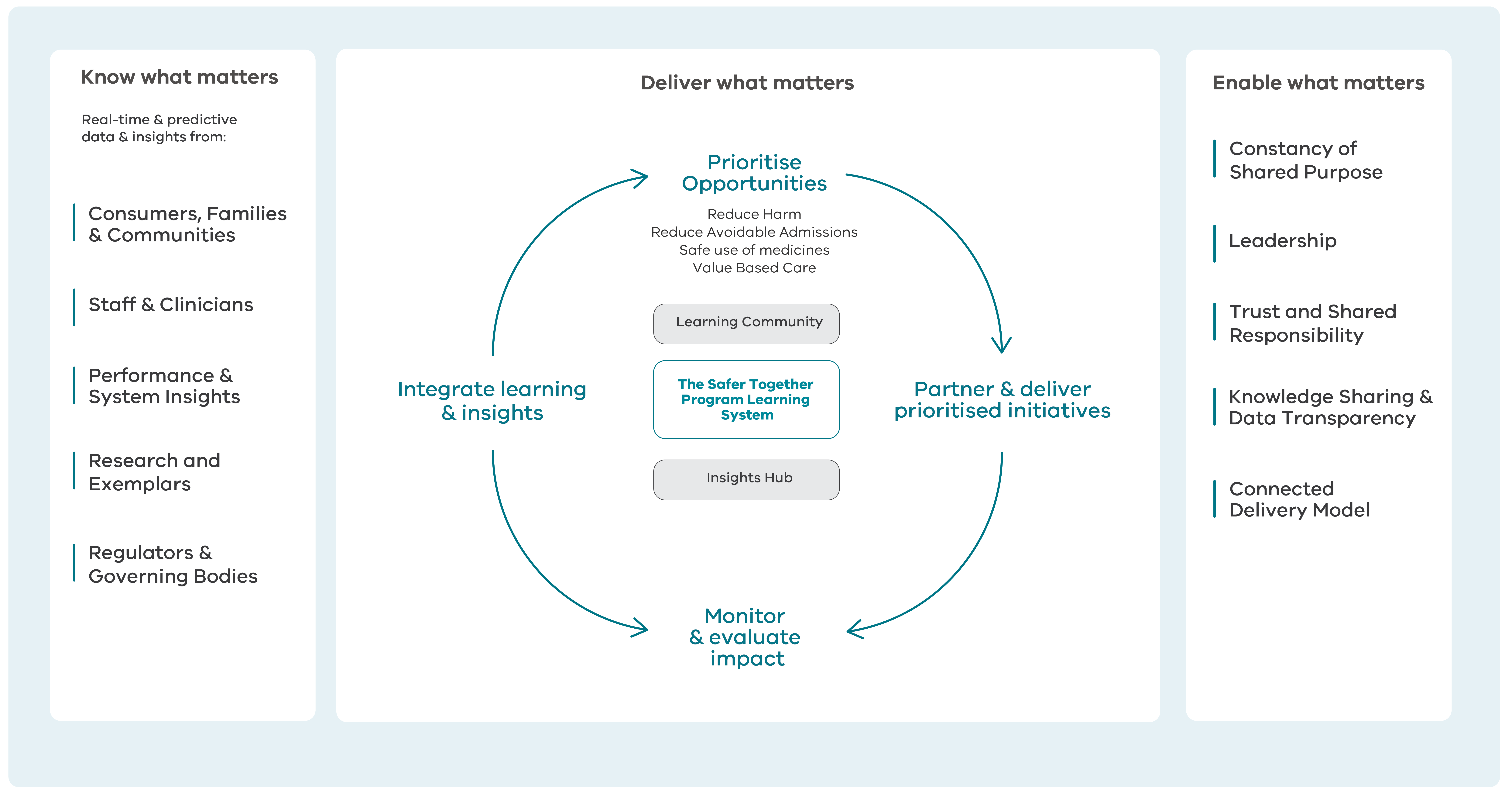About the program
Find out how we're partnering with the health sector and consumers to create a safer more sustainable healthcare system for all Victorians.
What we offer health services
We offer a range of supports to help health services strengthen safety and quality of care.

How to get involved
Learn about the different ways to participate in the program and find out how to get involved.
Building a learning health system
The program aims to connect all Victorian health services through a continuously improving learning health system. In this system, health services collaborate to learn, share, and apply knowledge that continuously improves care and patient outcomes.
Our quality improvement work
Upcoming projects
See our upcoming projects and contribute to design and scoping activties.
Insights and knowledge
Learn from our past improvement projects to solve similar challenges in your health service.
Latest program news
PROJECT UPDATE
Preterm Birth Prevention – Every Week Counts II
Announcing our continued partnership in Round 2 of the Every Week Counts National Preterm Birth Prevention Collaborative.
NEWS
Evolving together: A unified approach to improving safety and outcomes in Victorian health care
This evolution marks a significant milestone: the 100,000 Lives program and other improvement activities have now been incorporated into the Safer Together Program.
PROJECT UPDATE
Celebrating one year of the Safer Together Program
In the last 12 months, the Safer Together Program (STP) has achieved strong early results across all four of its strategic priorities.


